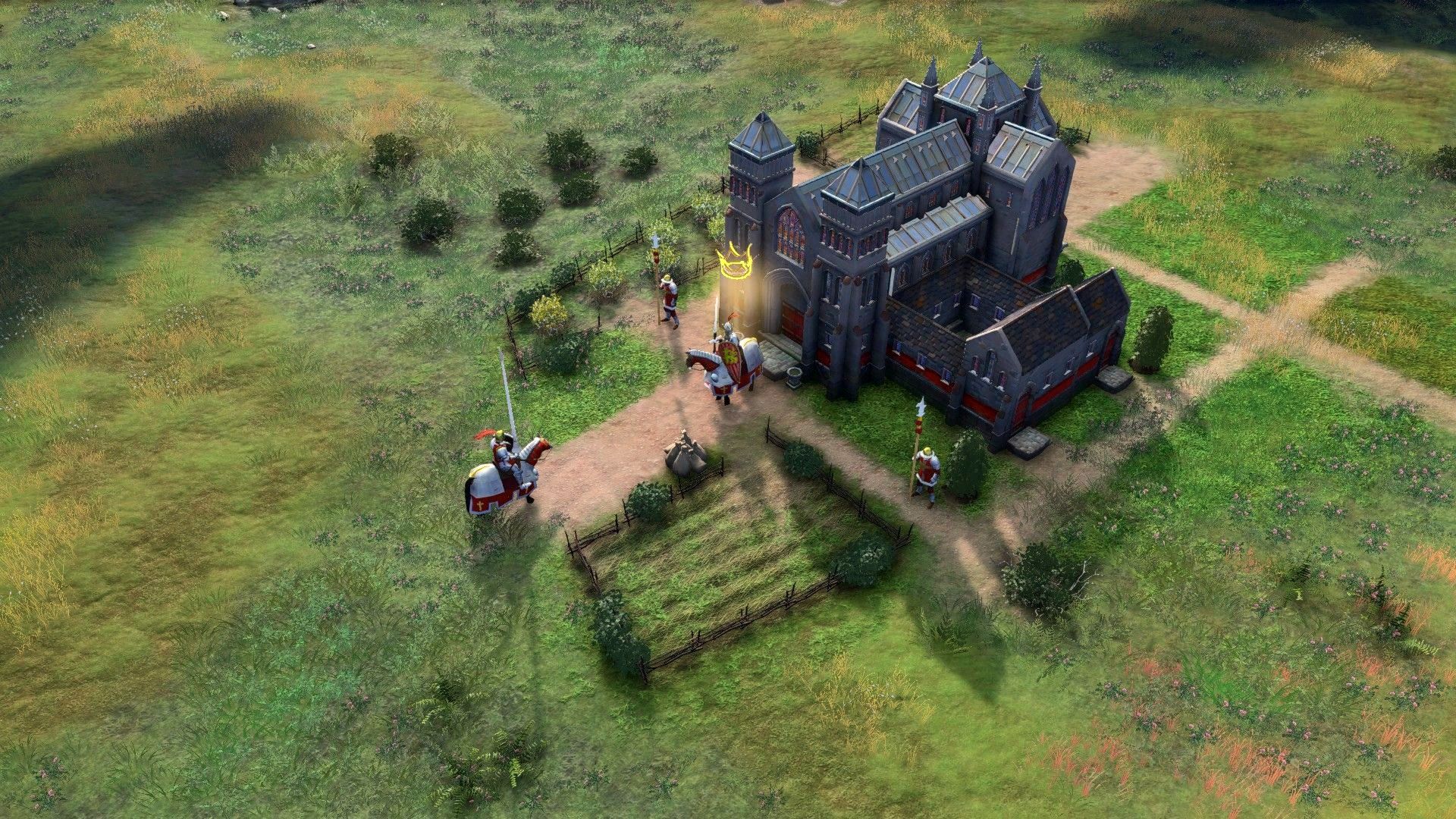A Beginner's Guide to Markets in Age of Empires IV

Markets are the hubs of economic trade in Age of Empires IV, and it is through them you can buy and sell different resources to either bring in a lot of one that you're short of or sell off one that you have in surplus. They also produce Traders, which can be used to establish trade routes for an additional, and often very important, source of Gold. Likewise, Markets are a crucial part of managing and growing your economy, and learning how and when to use them efficiently is the final piece of the economic puzzle.
In this article, we delve into the fundamental aspects of using Markets, providing you with essential knowledge to understand how markets, trade routes, and tributes between allies function as formidable instruments for expanding your empire.
Are you ready to lead your civilization to greatness? Join us in Empire Wars: Age of Empires Blog and shape the course of history.
Market fundamentals
The buying and selling of resources is something that you should rarely plan for. In most games, however, it's either something that you will eventually need to do, or if things take a turn for the worse and you need something at a moment's notice, something you'll be happy you can do.
At the Market you can sell one type of resource that you have in stock but don't need urgently, or buy one that you can't wait for your Villagers to gather. This is a good option if you're trying to balance your economy to make up for a short-term deficit of one particular resource. Keep in mind though, that this is not a sustainable option and should only be used when necessary.
You’ll always lose some resources when using the Market and each trade also has an impact on the exchange rate for that resource. If you trade Food for Gold for example, you'll get less Gold for the same amount of Food after every transaction. That process also effects trades going the other way it you've traded a lot of Food for Gold, then the Market will have a lot of Food, so if you then wanted to trade Gold for Food, the price would be a lot lower than normal. This is why later in games you'll usually end up paying a lot for highly sought after resources such as Stone. Always try to balance your economy through assigning the right amount of Villagers to each resource to meet your goals, and only use the Market as a band-aid.

These price fluctuations are based on each resource individually, so if you've only been buying Stone and the price has skyrocketed, your Wood and Food prices will still be at their base levels. The value of a resource will start to normalize when you're not trading on it, and it takes 30s for the cost to normalize by one increment. So if you purchased 1000 Stone, that's 10 increments, meaning it would take 300s for the price to fully normalize. It's because of how much the prices can fluctuate when you're buying and selling a resource that Markets should be used in moderation. If you have far too much of a resource and are not concerned with how much you're getting, then, of course, trade as much as you like, but in general, it's best to trade in small amounts periodically, or in emergency situations where you need Gold or one of the other resources extremely quickly.
An early game Market can be especially important at times when you're being attacked and have to react quickly. Since you can't always predict which units your opponent will attack you with, you can end up in situations where you've gathered the wrong resources to build the units you need to counter what's attacking you. At these times it's also likely that your Villagers are either idle or have taken shelter to avoid being killed, so you can't divert them to the resource you need. In these situations, being able to buy and sell resources from the Market can be crucial to save you from defeat.
Trade Routes
Traders
Another functionality of Markets is to produce Traders, specialized units that can be sent on expeditions to either neutral Trade Posts, or the Markets of other allied players in team games, to establish a trade route. With each successful roundtrip your Traders will return with a bounty of Gold, the amount of which will vary based on the length of the trip: the longer the trip, the more Gold you'll bring in. The size of the map you're playing on also has an influence on this, because the return rate on a trade route of equal length on different-sized maps will get you different amounts. The type of building you trade with also has an impact on the amount of Gold you'll bring back, with the riskier neutral Trade Posts providing 20% more Gold than the safer option of an allied player's Market.

While their cost can be recovered relatively quickly once you have an established trade route, that initial cost can still pose a risk early in games when you don't have a lot of Gold to spend or units to protect your Traders. You'll need to thoroughly scout the area and try to gauge if a route is safe enough to take the risk on producing some early game Traders. This can be somewhat easier in co-op team games, where you’ll be able to share the scouting and protection costs between players.

As you progress later into the game and Gold Veins begin to run dry, Traders will become vital. Units that require Gold to train are usually superior to regular units, such as Spearmen and Archers. Thus, ensuring that you have a healthy supply of it will allow you to maintain a tactical advantage as the game progresses. Control over Markets and trade routes will often decide the outcome of a game at this stage in both 1v1 and team games.
Trade ships
Trade Ships are the naval equivalent of the Trader unit and available to all civilizations from Age II onwards. They're used in much the same way as the Trader, albeit over water instead of land, and they also cost more to produce, both in terms resources and population capacity, since each ship counts as two towards your cap.
Trader Ships in 1 vs 1 can only be used effectively on maps with Coastal Trade Posts. If you select one and tell it to move to a Coastal Trade Post (or allied Docks in team games) it will pick up a delivery of Gold and Wood and bring it to your designated home market, which can be either a Dock or Market that you've built close enough to the coast.
Due to the nature of naval maps, Wood is often as valuable as Gold; there's not as much of it naturally available, and you need it for ship construction, so the first person to run out of Wood often loses. Naval trade routes also deliver Wood, however, so even if you run out of natural sources, a secure trade route will allow you to gain more. The longer the trade route, the more profitable each trip becomes.
Since they lack any offensive capabilities, Trade Ships are quite vulnerable to attack, especially later in games when the Gold they generate is even more valuable. The considerable costs of assigning naval units to protection duty are usually recouped after a few successful trades, however, you might want to build Keeps or Outposts on the islands where Coastal Trade Posts are located to gain some control over the area and help protect your trade route.
Trader Ships can be risky early in games due to their cost, but the sooner you establish your trade routes the better your long-term gains will be. Control over Trade Posts and trade routes will often decide the outcome of the game at later stages, in both 1v1 and team games.
Paying Tribute to Allies
In Team Games, Markets fill a special role because they enable you to trade resources to other allied players, albeit at a cost. Once a Market has been placed, you'll find the "Players & Tribute" button in the top right corner of the Ul; if you click it, it will bring up a list of players in your game, and you can then select one of them to send a Tribute to. Like normal trades at a Market, Tributes can be of any resource in increments of 100, but since you're not buying and selling for Gold, the Market will instead charge you a 30% handling fee, paid in the resource you're sending as Tribute. So, if you want to send 100 Wood to another player in Tribute, it will cost you 130 Wood to do so.

Like all Market functions, this is not something that you'll use all of the time, but there will be times when it can absolutely benefit you or another member of your team that desperately needs a resource, which can end up saving the game. Also, depending on your team composition, player's roles, and the location of resources on a map, you might decide it's best for some players to focus on specific resources more than others, and then you can use this system to share them amongst the team.
Strategic considerations
Abbasid Dynasty
If you develop the Trade Wing for the House of Wisdom, you'll gain access to three unique technologies that improve your trade rates, and the returns you get from each trade your Traders make. In addition, the House of Wisdom acts as a source market and awards 3, 4 or 5 (depending on age) traders upon completion.

French
For the French, neutral Trade Posts are revealed on the map by default upon starting a game. This not only lets you know exactly where you'll need to establish late-game trade routes, but it also gives you an indication of where you opponent's Town Center might be placed. Additionally, French Traders possess the unique ability to choose which resource they bring back, giving you a lot of late-game versatility.
Also, by selecting the Chamber of Commerce as our landmark building in Age II, we gain a free trader each time we research an economic technology.

Mongols
The Mongols can make use of their Silk Road ability to increase the amount of resources their Traders bring back from each trade, based on how many Traders you have. If you acquire the Stone Commerce technology from the Market, Traders will also bring back Stone as well as Gold with each trade.

Thank you for making it this far. If you've enjoyed our content and want to stay updated on every article, we invite you to join us at Empire Wars: Age of Empires Blog to Unlock the Empire's Secrets 😉.

